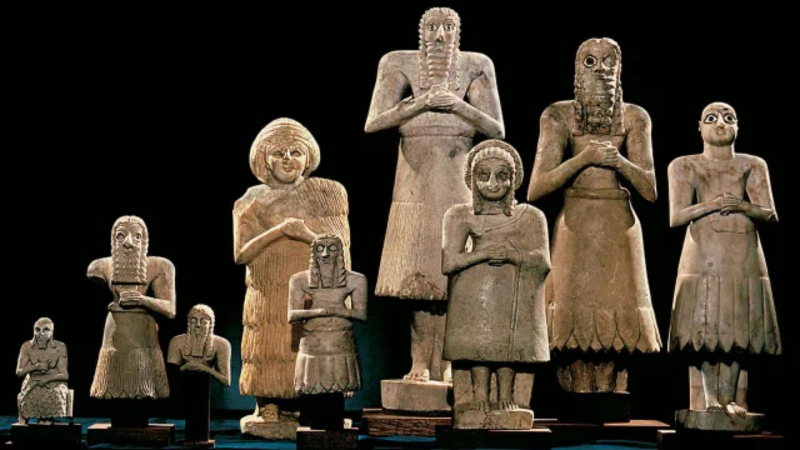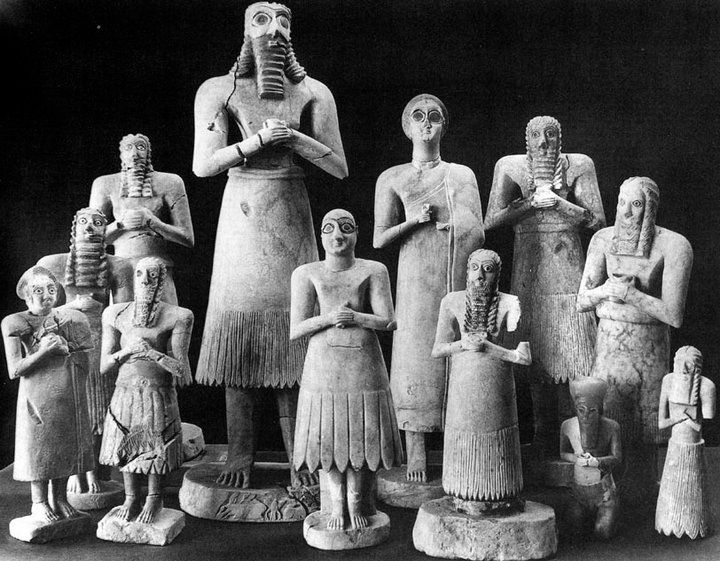Statues of Tell Asmar
Statues of Tell Asmar is the next outstanding example of Mesopotamian art. Twelve sculptures known as the Tell Asmar Hoard (Early Dynastic I-II, approx. 2900-2550 BC) were discovered in 1933 in Eshnunna (current-day Tell Asmar), in the Diyala Governorate of Iraq. They continue to be the only examples of the abstract style of Early Dynastic temple sculpture, despite subsequent discoveries at this site and elsewhere in the larger Mesopotamian region (2900 BC–2350 BC). The desert east of the Diyala River, just north of its confluence with the Tigris, was a major source of unique, high-quality antiquities for Baghdad's antique dealers in the late 1920s. The twelve statues together referred to as the Tell Asmar Hoard are among the most well-known and well-preserved artifacts. The trove was discovered at Tell Asmar during the 1933–1934 excavation season beneath the floor of a temple honoring the god Abu. In the sanctuary, the sculptures were arranged neatly in an oblong chamber next to an altar. The exact positioning shows that they were buried on purpose. However, it is still unknown why the body was buried and who, if anyone, was behind it.
The Tell Asmar Hoard's statues are between 8.2 inches and 72 centimeters tall (28.3 in.). Ten of the discovered statues are male and two are female. Two of the figurines are made of limestone, one (the smallest) of alabaster, and eight of the figures are made of gypsum. [4]: 57–59 All of the figures are depicted in a standing stance, with the exception of one that is kneeling. Large wedge-shaped feet gave the larger statues extra resilience, while thin circular bases were employed as supports. The males dress in patterned kilts that cover their thighs and midsection. The bare chest, which is partially framed by a black, styled beard, is framed by their large shoulders and thick, circular arms. The statues' huge eyes, which are unquestionably the most prominent artistic element in common, are crafted from inlays of white shell and black limestone; one of the figures has lapis lazuli pupils.










